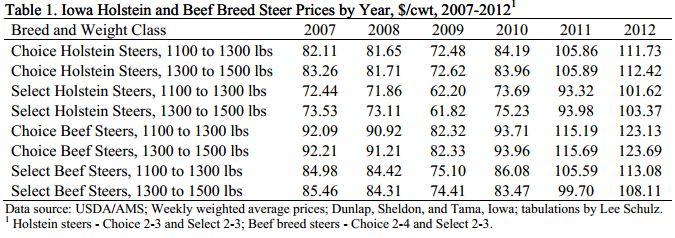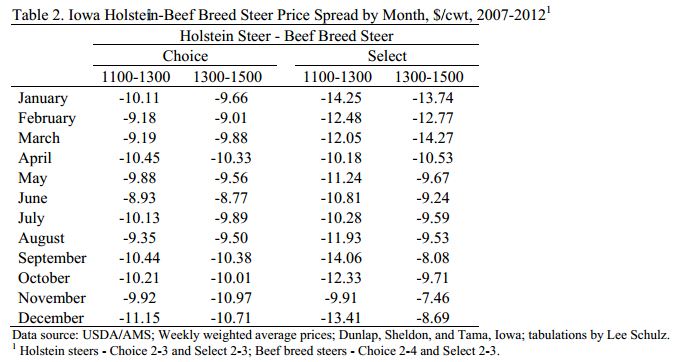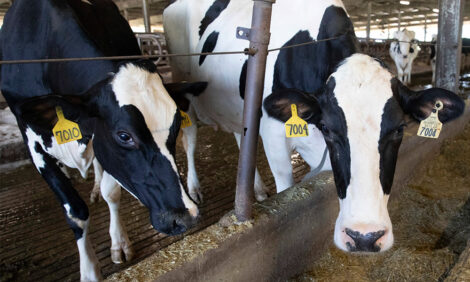



Iowa: The Ideal State For Holstein Beef
US - Holstein steers represent an important meat sector in Iowa, accounting for 36 per cent of all sale reported steer slaughter in the state, according to a Iowa University Professor.This stems from the state being a vibrant dairy region with a herd of 205,000 - making Iowa the 12th largest dairy state, writes Lee Schulz, Assistant Professor of Economics.
Iowa is the 13th in milk production (4.43 billion pounds per year), and 10th in milk production per cow (21,730 pounds of milk per cow per year).
But there is more to milk production to the industry. Fattening Holsteins is a major meat enterprise and across the US as a whole accounts for 5.5 per cent of beef consumed.
Feeding Holstein steers is, and will continue to be, an important industry in Iowa due to a steady supply of Holstein bull calves, abundant feed production, feeding facilities and feed storage, management, labour and slaughter capacity.
According to USDA Agricultural Marketing Service reports on auction markets in Iowa, Holstein steers accounted for approximately 36 percent of all reported slaughter steer auction sales in 2012.
With a growing dairy industry in Northwest Iowa, dairy steer feeding is periodically attractive for cattle feeders that might not otherwise consider it. Also, considering the historically tight feeder cattle supply situation and resultant record high feeder cattle prices it may be a good time to take a closer look at feeding dairy steers.
I am often asked, what is the market price relationship between Holstein and beef breed fed steers? The price comparisons in table 1 suggest that Holstein steers are discounted compared to beef breed steers in all cases, but also that Select grade Holstein steers are discounted more heavily than Select grade beef breed steers.
From 2007 through 2012 Holstein-beef breed slaughter steer price spreads have widened for Choice cattle and narrowed for Select cattle. This likely comes as more value has been extracted from beef breeds grading Choice (e.g., premiums associated with branded products, breed associations, etc.) resulting in increasing relative prices compared to Choice grading Holstein steers.
Table 2 shows the six-year average for each month’s Holstein-beef breed price spread. Averaging across selling months indicates that the price spread for Choice cattle tends to be the narrowest during the first six months of a year and widens throughout the latter part of a year.
For Select cattle the opposite price spread pattern exists with the widest price spreads tending to occur early in a year and becoming narrower as a year progresses.




